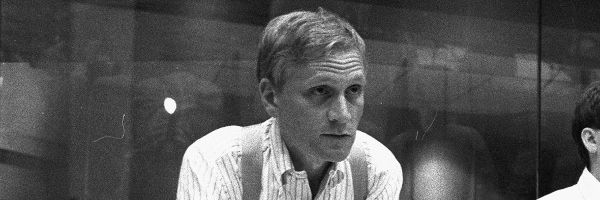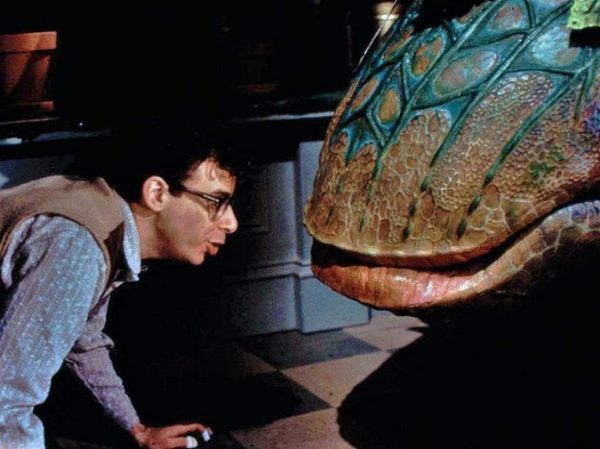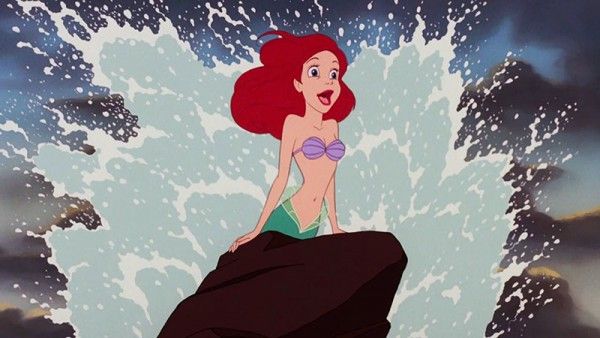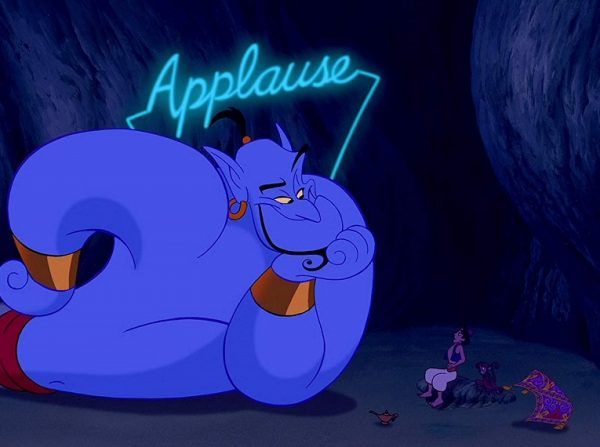The most undeniably moving moments in Don Hahn’s tremendous 2009 documentary Waking Sleeping Beauty, which charted the return of Disney Animation’s cultural dominance after decades in hibernation, were those dedicated to lyricist Howard Ashman. Ashman, who provided lyrics to The Little Mermaid, Beauty and the Beast and part of Aladdin, contracted AIDS and his health began to fail. An unforgettable anecdote from the documentary detailed how the filmmakers, after a particularly rapturous test screening, visited Ashman in his Manhattan hospital room. The lyricist, who helped save Walt Disney’s beloved feature animation program as it teetered on the brink, had lost his sight and was barely 80 pounds. As they delivered the good news to the dying man, he was wearing his promotional Beauty and the Beast sweatshirt. By the time Beauty and the Beast opened later that year, Ashman was dead and the movie was dedicated to him. He was 40.
Now, Hahn has taken Ashman’s story and turned it into an entire documentary feature. And Howard, available later this week on Disney+, is powerful and profound. Through conversations with colleagues and family members, archival footage, and clips from his various projects, the fullness of his life is rendered beautifully, with complexity, texture and detail. And yes, you will probably cry. A lot.
Howard begins with young Ashman’s life in Baltimore, as he puts on shows that he’d make up for his younger sister (who is frequently interviewed here) and soon enough he was doing stage shows as a child. By 14 he was “musicalizing his laundry list” (according to him). Ashman enrolled in Boston University and then Goddard College in Vermont, before going to Indiana University for graduate school. (Ironically, he staged a version of The Snow Queen while in graduate school, which would of course later be adapted as a Disney musical with Frozen.) In New York, Ashman toiled in the underground theater scene, eventually creating a crossover hit in Little Shop of Horrors, the musical adaptation of the low-budget Roger Corman midnight movie, that he created with composer Alan Menken. Little Shop of Horrors garnered huge buzz, moved into bigger venues and eventually became a Hollywood film that Ashman wrote and drafted new songs for (the film version was produced by record magnate David Geffen).
When Ashman’s next project for the stage, a somewhat baffling Broadway adaptation of Michael Ritchie’s 1975 comedy Smile, with music by Marvin Hamlisch, opened and soon closed (and somewhat burned by the test-audience process that had neutered his original ending to Little Shop of Horrors), Ashman was in the mood for a new challenge.
Prodded by his then-best friend Geffen, Disney exec Jeffrey Katzenberg lured Ashman out to Hollywood and specifically to Disney. After writing a live-action biopic of Tina Turner that would eventually become What’s Love Got to Do With It, Howard joined the ragtag bunch of animators and technicians in a loose collection of trailers and grungy industrial buildings down the street that was then home to Walt Disney Feature Animation. (They’d been kicked off the lot, the old school animation building transformed to executive offices and live-action production pods.) Ashman was in heaven. He recruited Menken to join him and they soon began work on The Little Mermaid, a movie that would resurrect the moribund Disney Animation division and kick-start the so-called Disney Renaissance. Beauty and the Beast, the first animated feature ever nominated for the Best Picture Oscar, and Aladdin, would follow soon after. Both would be released after his passing.
Like with Waking Sleeping Beauty, Hahn sidesteps talking head interviews. Instead, he simply records his subjects speaking and plays them over archival footage, vintage promotional material, or old photos. The result is surprisingly revealing; there’s the way it was presented to the world and the way that those living through it felt at the time (he wisely interviews colleagues at Disney and creative confederates like Menken but also people like Howard’s mother and his long-term partner, to get a fuller picture). This really shows itself during sequences like one dedicated to the press junket for The Little Mermaid, which took place at the Walt Disney World resort. There’s audio from interviews conducted at that junket, with Ashman sounding jovial, practically effervescent, as he spoke about finally being proud of something he worked on. And then there are darker stories, like how he was already wearing a catheter in his chest and he struggled to maintain equilibrium on the attractions. When he saw a Little Mermaid parade skittering down Main Street, he burst into tears. He was that aware of his mortality and his immortality, too – he was leaving the Little Mermaid behind.
And that kind of melancholy hangs over the entire movie; this inevitability that the documentary is hurtling towards and that we don’t want to see happen. Just think of what he could have accomplished if he’d lived longer, or even contracted the disease at a later date, when it was more manageable, livable.
One of the greatest aspects of the documentary is Hahn’s presentation of Ashman’s contributions not just to the music, but to specifics aspects of the story and to storytelling in general. Keep in mind that this was an animation studio that was largely populated by fresh faces; the old guard had retired and some of the more promising animators had left. The animators who stuck around, while hugely talented, lacked experience in formal storytelling. (One animator recounts how baffled he was when Ashman presented the necessity for an “I want” song; it’s now commonplace in any Disney musical.) His ideas ranged from having Sebastian be a Jamaican crab to zeroing in on a design of Ursula the sea witch that closely resembled renowned drag queen Divine (another Baltimore icon) to the entirety of Aladdin (much of which was changed after his death when he was replaced by Tim Rice; can you tell the difference between “Friend Like Me” and “Whole New World?”) At one point Roy Disney, through archival audio, compared Ashman to Walt Disney. He would know.
If you’re worried that Howard will be scrubbed clean, especially given the platform’s kneejerk reaction to Love, Victor, don’t worry. It’s not completely sanitized. The difference between Howard’s lifestyle and the lifestyle of his ex-boyfriend, who he started the theater company with before later parting ways, is detailed in a surprisingly straightforward way. (It’s heavily implied that the ex-boyfriend, who died of AIDS before Howard even knew he was sick, was the one who transmitted the virus to Ashman.) Ashman’s sexuality and his coping with the disease is handled in a straightforward manner. Nothing is sentimentalized or made maudlin; when Menken (who also provided the music for the documentary) finally cracks, you only hear his voice tremble.
And Howard isn’t painted as a saint, either. He was nearly fired from The Little Mermaid on multiple occasions, due to his dogged perfectionism and his insistence that “Part of Your World” be in the movie, and he could be demanding and pushy and secretive, particularly towards the end of his life. But all of those sides of Ashman, the messy sides and the vulnerable sides and the sides he’d rather not let anyone else see, they’re what made his songs so unforgettable, his movies so great. (There’s a rather heated debate, at one point, whether or not Beauty and the Beast was a metaphor for his illness.)
One of the biggest, most refreshing surprises to come out of Disney+’s launch, is how robust and focused its documentary programming has been, whether it’s feature-length documentaries like Dolphin Reef, or long-form content like The Imagineering Story, Disney Gallery or Into the Unknown. Most of the documentary content has been about the company itself, but they have wisely resisted the urge to self-mythologize. It’s miraculous, really. The same is true of Howard, arguably the very best documentary that the service has produced, and one that turns a Disney Legend into a human being. Hahn, who produced Beauty and the Beast, could have easily tipped towards aggrandizement, presenting Ashman as a peerless, passionate creative and craftsman. And Ashman’s accomplishments cannot be compared, his impact on the company cannot be diminished. But Hahn chooses to focus on the entirety of the man, foibles and all. The shortcomings, the temper, the strive for ultimate perfection whether he reached it or not – that’s what made Howard so special. And what makes Howard so special.
Grade: A




